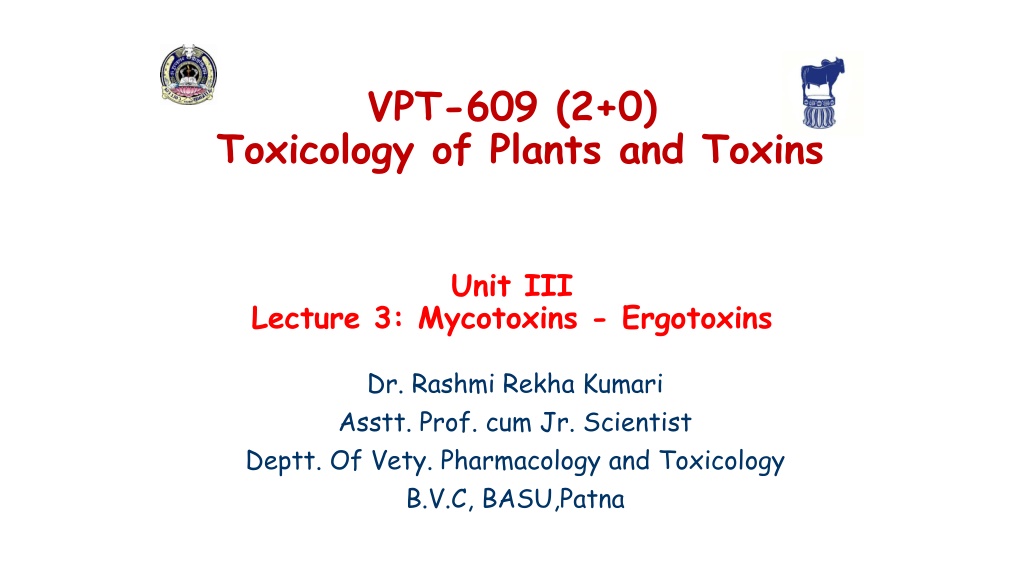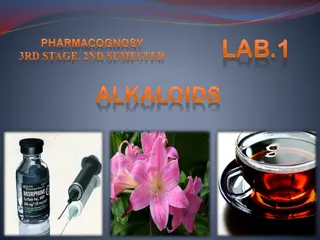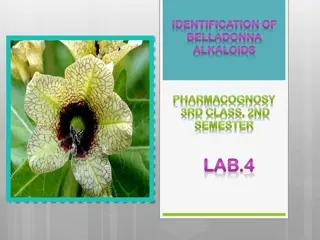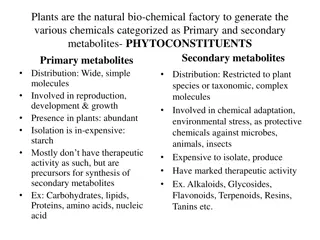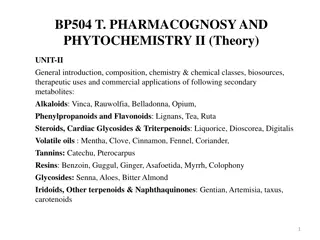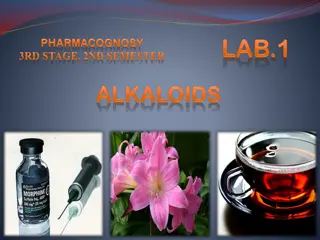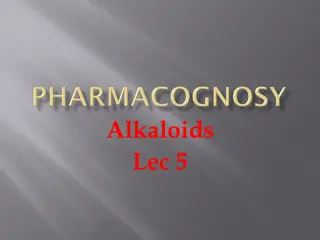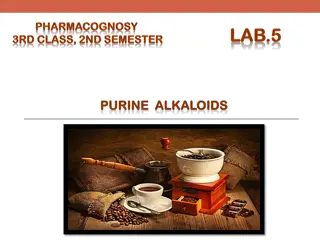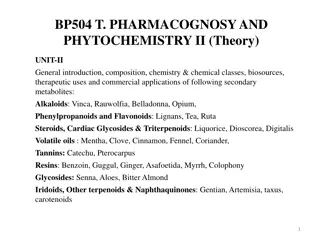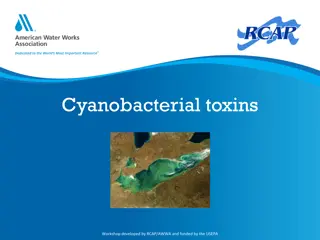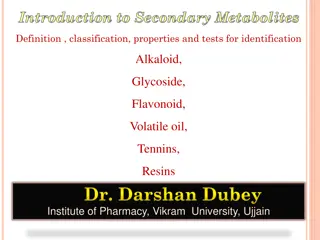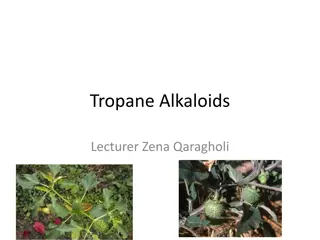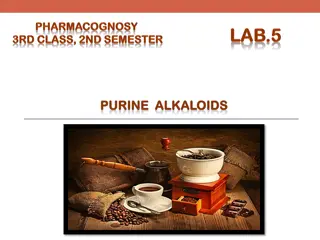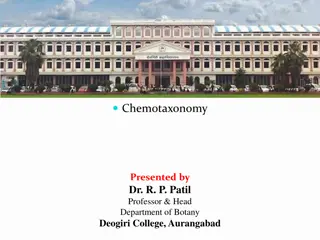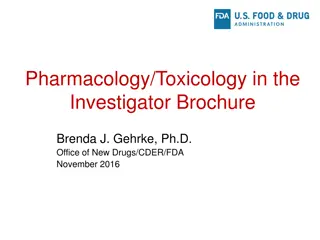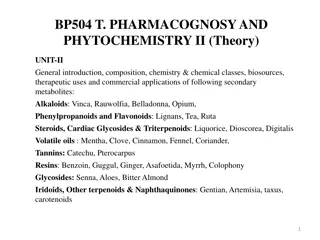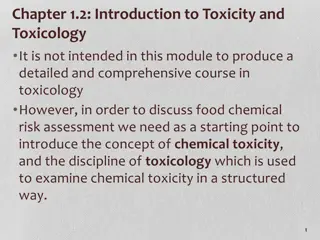Understanding Ergot Alkaloids: Toxicology of Plants and Toxins
Ergot alkaloids are toxins produced by parasitic fungi that invade cereal crops and grasses, leading to the formation of ergot. These toxins, including ergometrine and ergotamine, have various effects on the central nervous system, smooth muscles, and overall health. Ergotism, resulting from the ingestion of ergot-infested feed, can cause neurotoxicity and chronic conditions like gangrene. It is crucial to understand the toxic principles and effects of ergot alkaloids to prevent potential health risks in animals and humans.
Download Presentation

Please find below an Image/Link to download the presentation.
The content on the website is provided AS IS for your information and personal use only. It may not be sold, licensed, or shared on other websites without obtaining consent from the author. Download presentation by click this link. If you encounter any issues during the download, it is possible that the publisher has removed the file from their server.
E N D
Presentation Transcript
VPT-609 (2+0) Toxicology of Plants and Toxins Unit III Lecture 3: Mycotoxins - Ergotoxins Dr. Rashmi Rekha Kumari Asstt. Prof. cum Jr. Scientist Deptt. Of Vety. Pharmacology and Toxicology B.V.C, BASU,Patna
Ergot alkaloids These, are toxins produced by parasitic fungus belonging to claviceps genus: C. pupurea, C. paspalie and C. cinerea. which grow on cereal crops and grasses under favourable condition( Rye, oat, barley, wheat, jowar and grasses Paspalum scrobiculum, P. dilatatum and P. notatum). Ergot infested jowar looks black (blacken on plant itself before harvesting: Rejected as unfit for human use and so get diverted for animal feeds). The disease is called ergotism
Claviceps purpurea invade the flowers and spikes of cereals, particularly rye, oat, barley wheat and grasses Sclerotium the toxic element of fungus, is a black hard elongated body which destroys and replaces the grain or seed of mature plants If these are not harvested with the host plant, the slerotia drop to the ground, overwinter and produces millions of spores which spread infection in following spring. These sclerotia constitute the substance known as ergot which spreads on the grass Ergotism commonly occur in cattle and sheep
Toxic Principle Ergot ergometrine, ergocriptine, ergotoxin, ergostine etc. They are derivative acid(LSD). Chemically fall categories, whether they possess an amine(e.g. ergometrine) or amino acid(ergotamine) side chain. Autoclaving, exposure to high temp(> 150C) and application of 1% chlorine solution markedly reduce the toxicity of ergot alkaloids. alkaloids: Ergotamine, of lysergic into two major
Ergot and alkaloid are CNS and smooth muscle stimulant and their basic actions are: Vasoconstriction Uterine contraction Adrenergic blockade Serotonin antagonism Medullary effect and CNS stimulant
Ergotism is of two type: Acute form charecterised by neuro toxicity and chronic ergotism charecterised by gangrene of extremities: Acute form (Nervous or convulsive ergotism): Rare but result from ingestion of large amount of ergot infested feed by hungry animals. This form occurs mostly in carnivours, horse and sheep but rarely in cattle. Mechanism of Toxicosis: Ergot alkaloid being the derivatives of LSD interfere with neurotransmission in CNS. The Ergot alkaloids are 5HT antagonist and also act as dopamine agonist in CNS. Therefore the toxicity is charecterised by nervous sign. They also depress the vasomotor and respiratory centre.
Clinical Sign Hyperirritability, muscular incoordination, ataxia, aggressiveness, weakness, recumbency, tremors, fatal convulsions and death following respiratory failure.
Chronic form of Ergotism(Gangrenous Ergotism) Chronic form ( gangrenous ergotism) : common in farm animal, occurs most commonly in cattle but may also affect other species including human. It is charecterised by lameness, the first sign, which may appear2-6 weeks or more after initial ingestion depending on the concentration of alkaloid in ergot and the quantity of ergot in feed. Associated with lameness are swelling and tenderness of fetlock joint and pastern.
There is sharply demarcated necrosis of feet, ear and tail; in severe cases the hooves or feet and tail may be sloughed off leaving a clean surface that may ooze serum and become encrusted. The condition is exerbated in cold weather. Occasionally abortion, foetal death and sterility may be seen. It should be differentiated from identical sign seen in fescue foot in cattle, Degnala disease
Mechanism of Toxicosis: Ergot alkaloid causing intense constriction of smooth muscle of vasculature and stimulation of uterine muscle. Gangrenous ergotism results as follows: Vasoconstriction in extremities-damage to capillary endothelium- thrombus formation-vascular stasis-loss of blood supply to the tips of the extremities(muzzle, limb(hooves), ear and tail- necrosis and gangrene of affected parts-sloughing of the affected part.
Treatment Remove the offending feed and switch over to new feed. Keep the animal in warm and clean quarters. Saline purgative, Symptomatic treatment of affected area. Broad spectrum antibiotic for treating necrotic lesion and secondary bacterial infection.
